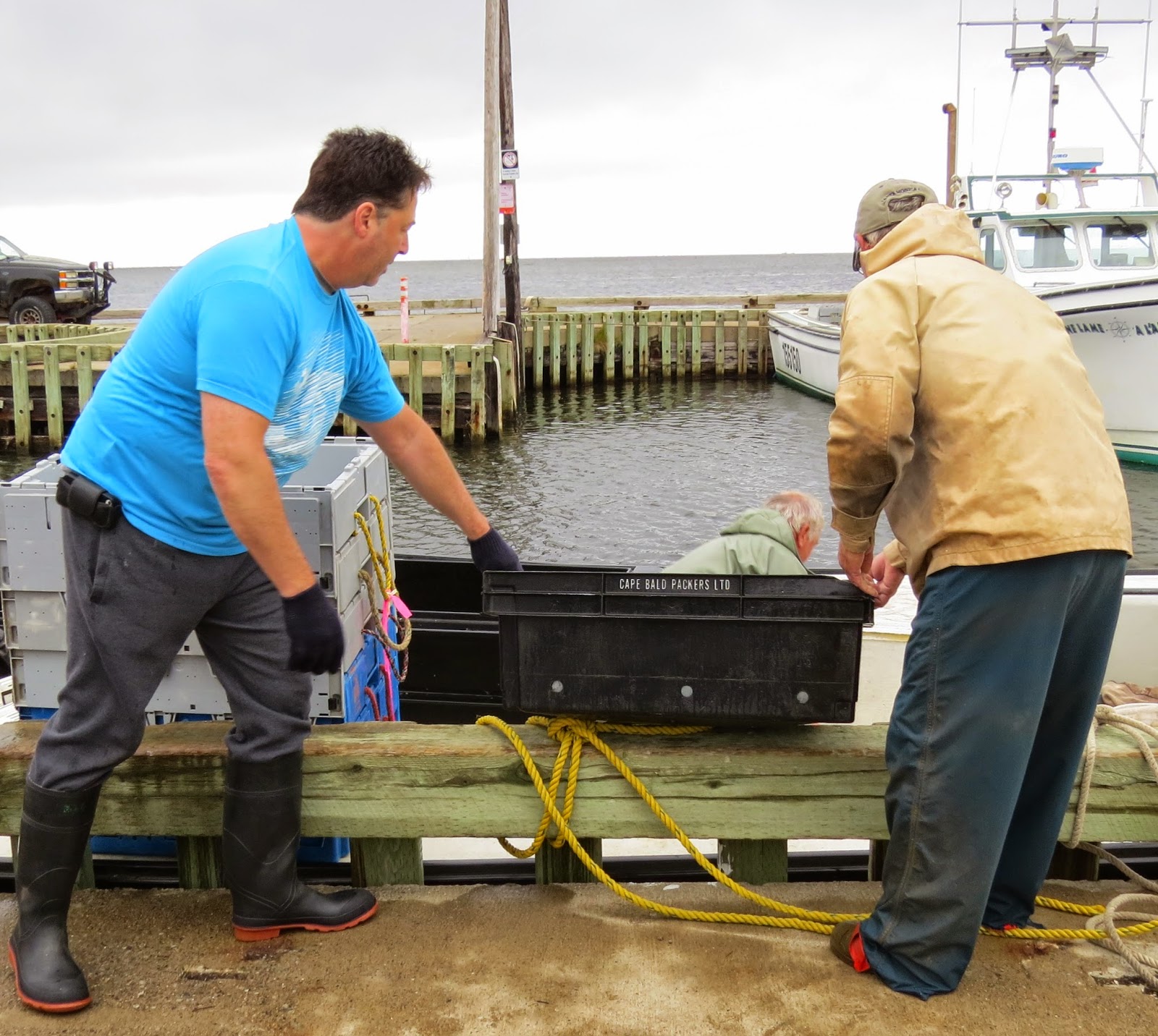Sunday August 17: Torrential rains greeted us. Not daunted, we visited with friends Paul and Judy, visiting the local Shediac Museum where daughter Chloe guided. Paul and Judy are from Northern Ontario, and Montreal respectively. Chloe was raised in Shediac, and is immersed in the culture of L'Acadie, including the local dialect referred to as Chiac (recognizable as French, with a LOT of nuance).
We asked about the origin of the word "Acadia". Some say it originates from the European concept of Arcadia. That doesn't make sense to me. I prefer the other explanation, that it originates from a Mi' kmaq word "Quoddy" (fertile area), a name often found in place names in Maine and New Brunswick, or "Algatig", meaing "camp". I will pass this on to Marv, my friend of Mi' kmaq origin, and ask for his learned response.
Most of the Canadians that read this may recall the 42 seconds of history you learned in grade school related to the Acadian expulsions following the defeat of the French in North America in 1763, This clumsy and cruel policy resulted in Acadians being moved to the other parts of the newly occupied former French possessions known as Louisiane. So some Acadians stayed along the Mississippi, and became known as Cajuns. Many eventually moved back to the Nova Scotia, New Brunswick and PEI shores, where they continue to fish and farm to this day.
One can see the Acadian flag flying along the Northumberland shore of New Brunswick. And if you are fortunate, as Paul and I were, to arrive at a local dock at 3 PM during lobster season, you may be able to buy a few from the lobster fishers before the wholesalers make off with the harvest.
At the dock at Cormierville, the Acadien Flag flies, while a Great Black-backed Gull (below) watches and waits for any tasty morsels tossed from the lobster boats.
Paul's friend Danny, had arranged for a few lobsters for us to take home for our supper. Here he (in blue) is helping to load lobsters and prepare the boats for the next day. The lobster fishers explained the proper method of cooking lobsters. Fill you large pot 3/4 full and add 3/4 cup salt. Bring to a boil. Fill the pot with lobster (size doesn't matter). Bring back to boil, for 12 minutes. Remove immediately from the stove, and immerse in cold water. Ta daaaaa!
This is what our 15 lobsters looked like after the above process. Hmmm, fresh from the sea is best!
Crated lobsters (above) just off the boat (below). The crates, which you can see on the dock, are loaded into refrigerated trucks for shipment to the local processing plant, or they go directly off to North American cities. Note: the best ones stay in the Maritimes!
On a previous trip to Shediac, my friend Gershon and I were treated to a full day of lobster fishing with Paul's friend Gilles. We were at the dock at 4 AM and back by 4 PM. We learned more about the local sea (Northumberland Strait) and the economics of fishing than we could have learned in a year at school. Proving again that direct experience is the best education one can receive.
The next day, Monday August 18, we toured the Parlee Beach and Pointe des Chenes shoreline with Judy, in the rain.







No comments:
Post a Comment
Help with "Comments"
1) Click on "Comments" at the end of the blog entry that you wish to comment on.
2) Type your comment in the field provided.
3) Under your comment choose "Name/URL". Type your name (first and/or last names) in the box provided. Choosing "Name/URL" will ensure that you do not need to "register" before leaving a comment.
4) Click "Preview" to see how your comment will look on the site if you wish, otherwise skip to step 5.
5) Click "Publish" to submit your comment.
Please note that all comments are moderated so I will review them before they are published.
I look forward to receiving your comments.